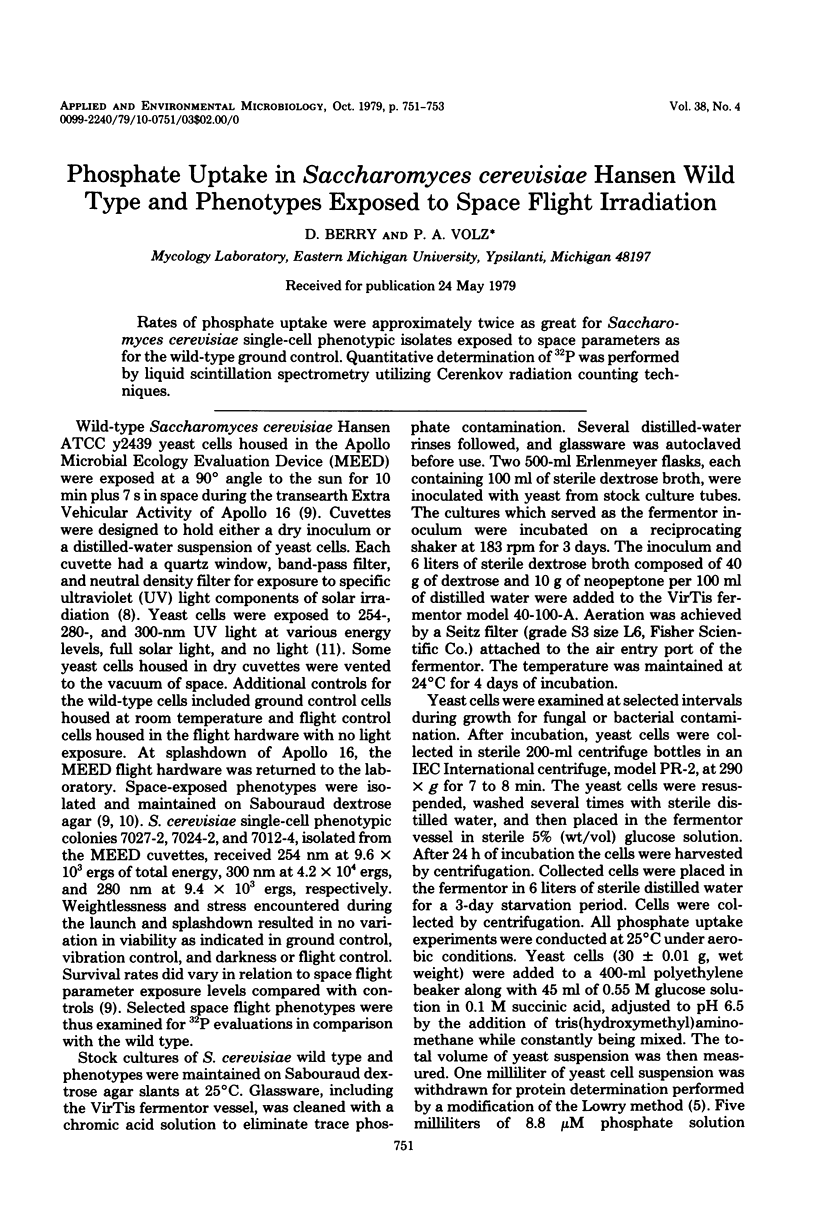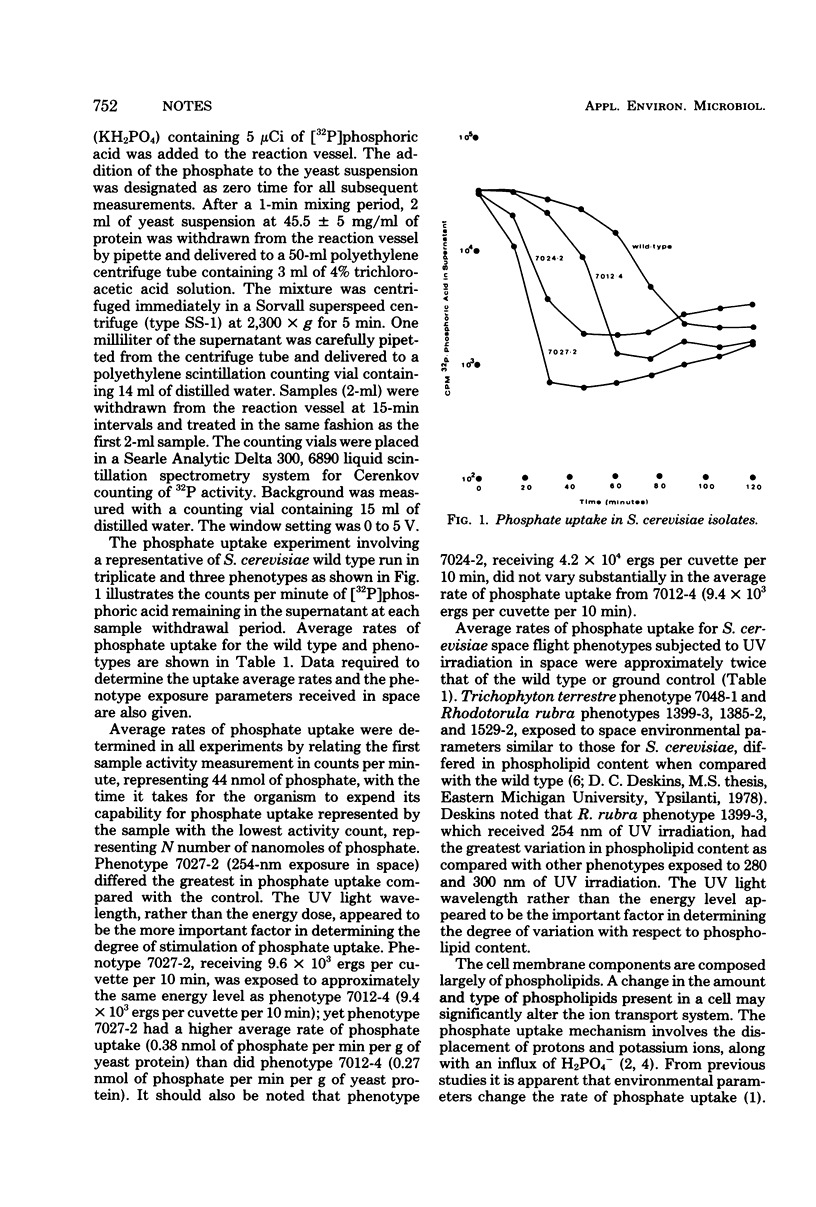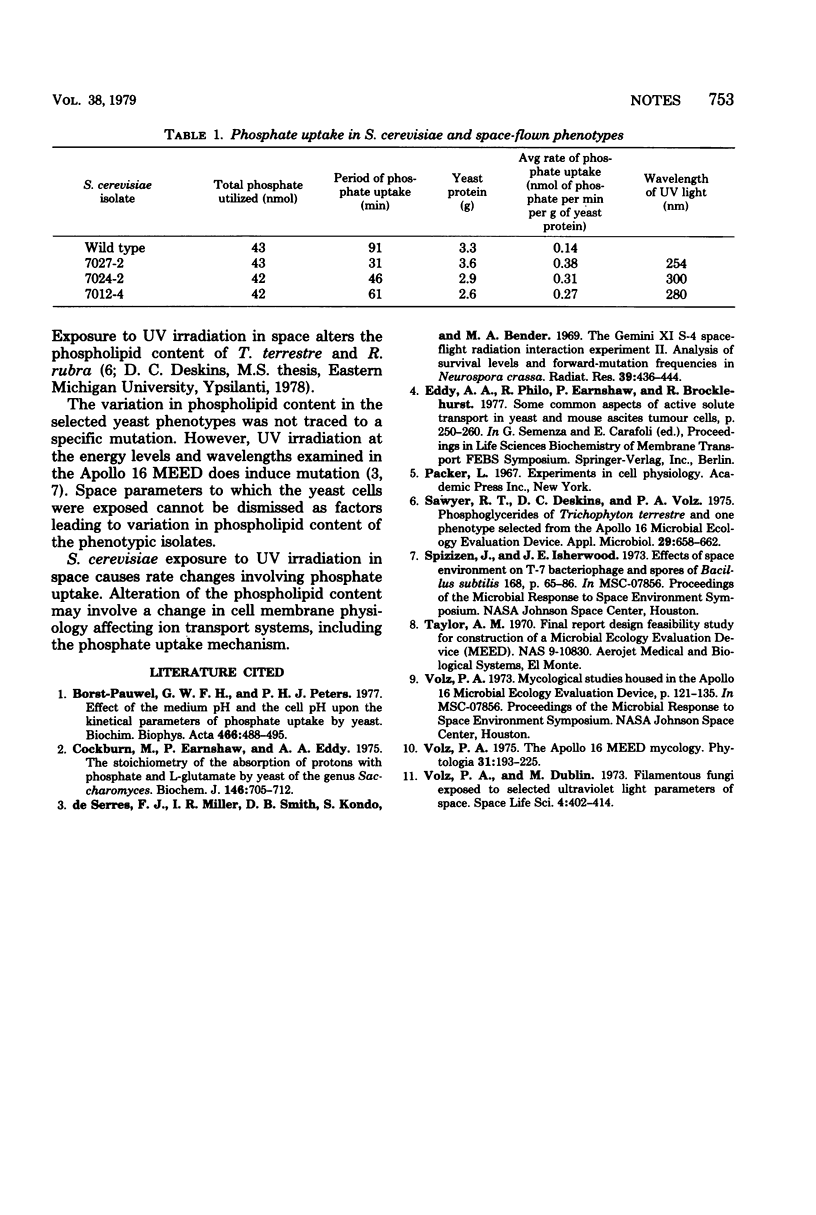Abstract
Rates of phosphate uptake were approximately twice as great for Saccharomyces cerevisiae single-cell phenotypic isolates exposed to space parameters as for the wild-type ground control. Quantitative determination of 32P was performed by liquid scintillation spectrometry utilizing Cerenkov radiation counting techniques.
Full text
PDF


Selected References
These references are in PubMed. This may not be the complete list of references from this article.
- Borst-Pauwels G. W., Peters P. H. Effect of the medium pH and the cell pH upon the kinetical parameters of phosphate uptake by yeast. Biochim Biophys Acta. 1977 May 2;466(3):488–495. doi: 10.1016/0005-2736(77)90341-8. [DOI] [PubMed] [Google Scholar]
- Cockburn M., Earnshaw P., Eddy A. A. The stoicheiometry of the absorption of protons with phosphate and L-glutamate by yeasts of the genus Saccharomyces. Biochem J. 1975 Mar;146(3):705–712. doi: 10.1042/bj1460705. [DOI] [PMC free article] [PubMed] [Google Scholar]
- De Serres F. J., Miller I. R., Smith D. B., Kondo S., Bender M. A. The gemini-XI S-4 spaceflight radiation interaction experiment. II. Analysis of survival levels and forward-mutation frequencies in Neurospora crassa. Radiat Res. 1969 Aug;39(2):436–444. [PubMed] [Google Scholar]
- Sawyer R. T., Deskins D. C., Volz P. A. Phosphoglycerides of Trichophyton terrestre and one phenotype selected from the Apollo 16 microbial ecology evaluation device. Appl Microbiol. 1975 May;29(5):658–662. doi: 10.1128/am.29.5.658-662.1975. [DOI] [PMC free article] [PubMed] [Google Scholar]
- Volz P. A., Dublin M. Filamentous fungi exposed to spaceflight stresses including known levels of ultraviolet irradiations. Space Life Sci. 1973 Sep-Dec;4(3):402–414. doi: 10.1007/BF00930352. [DOI] [PubMed] [Google Scholar]


